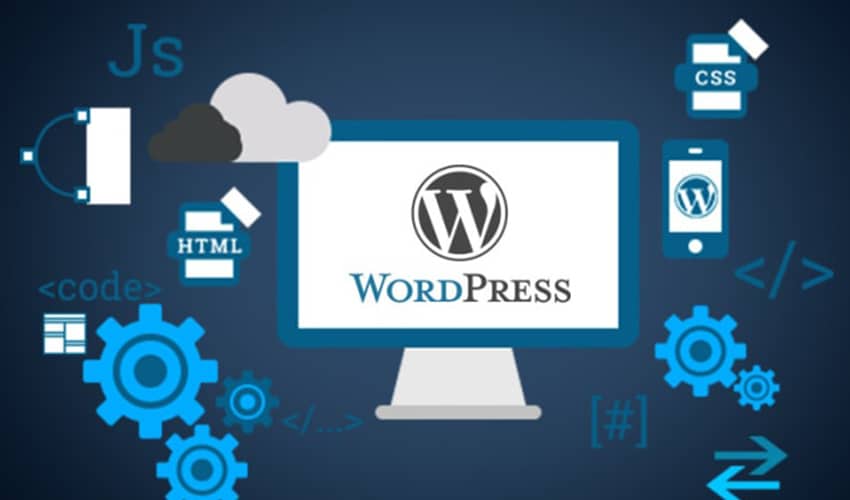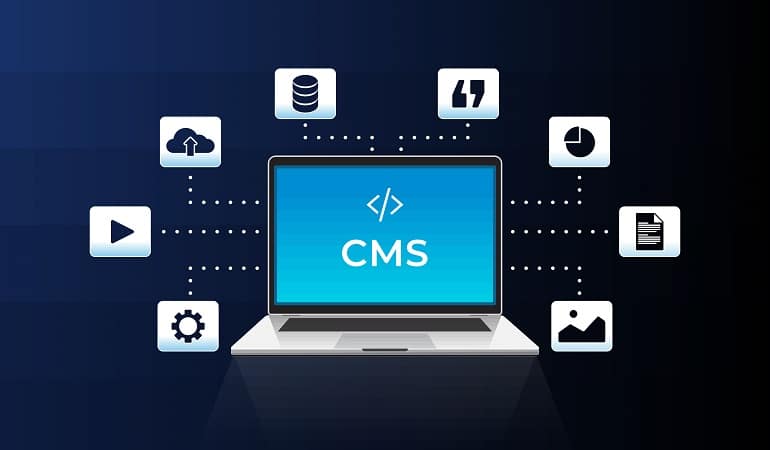In the landscape of modern content management systems, WordPress has recently made substantial strides by embracing a headless architecture. This transition marks a pivotal moment in web development, elevating WordPress beyond its traditional roots. By decoupling the front-end presentation layer from the back-end content management system, Custom WordPress Development Company opens doors to a realm of possibilities. The implications of this move extend far beyond mere convenience, hinting at a transformative shift that resonates with the evolving demands of the digital age.
Introduction to Headless CMS
In the realm of content management systems, a Headless CMS refers to a backend-only solution that separates the content from its presentation layer. By decoupling the backend from the frontend, organizations can enjoy greater flexibility in delivering content across various digital channels. The move to a Headless CMS architecture offers benefits such as improved performance, enhanced security, and the ability to future-proof digital experiences.
What is a Headless CMS?
A Headless CMS is a content management system that separates the backend content storage and management (the head) from the frontend presentation layer (the body). In this architecture, content is stored and managed through an API, enabling developers to display it on various platforms and devices. Core components of a Headless CMS include the content repository, API, and frontend delivery system.
Defining the Headless Architecture
What distinguishes a headless CMS from traditional content management systems? A headless CMS separates the backend content management from the frontend presentation, offering greater flexibility and scalability. In the context of a custom WordPress development company, utilizing WordPress in a headless architecture unlocks various benefits, including the best headless CMS features, tailored solutions for ecommerce, and custom WordPress website design, revolutionizing the headless CMS vs traditional CMS debate.
- Backend-frontend decoupling
- Scalability and flexibility
- Tailor-made solutions
- Revolutionizing CMS debates
Core Components of a Headless CMS
The fundamental elements that comprise a headless content management system (CMS) form the core components essential for decoupling backend content management from frontend presentation. These components typically include a robust API structure for content delivery, a database for storing content, user authentication mechanisms, webhooks for real-time updates, and a flexible templating system. By separating the content management layer from the presentation layer, headless CMSs offer unparalleled flexibility in designing and delivering digital experiences.
Benefits of Going Headless
Embracing a headless CMS like WordPress brings undeniable benefits to businesses seeking scalability and flexibility in their digital infrastructure. By decoupling the backend from the frontend, organizations can achieve enhanced performance and security, ensuring a seamless user experience while safeguarding sensitive data. These advantages make the transition to a headless architecture a compelling choice for those looking to elevate their online presence and future-proof their digital strategies.
Scalability and Flexibility
By harnessing a headless content management system like WordPress, how does scalability and flexibility revolutionize web development strategies for businesses in the modern digital landscape?
- Seamless integration with third-party services and tools.
- Ability to adapt quickly to changing business requirements.
- Enhanced performance through optimized content delivery.
- Scalability to handle high traffic volumes without compromising user experience.
Enhanced Performance and Security
Harnessing a headless content management system like WordPress not only revolutionizes web development strategies for businesses in the modern digital landscape but also enhances performance and security through optimized content delivery. By decoupling the frontend from the backend, WordPress as a headless CMS minimizes security vulnerabilities and improves site speed through streamlined content distribution, ensuring a secure and efficient user experience.

WordPress as a Headless CMS
WordPress’s transition into a headless CMS marks a pivotal shift in the digital sphere, allowing for enhanced flexibility and scalability in web development. By supporting headless architecture, WordPress empowers businesses to create custom websites tailored to their unique needs. This approach not only showcases the versatility of WordPress but also highlights its capability to drive innovation in the realm of content management systems.
How WordPress Supports Headless Architecture
In the realm of modern web development, WordPress has seamlessly transitioned into a robust headless CMS, offering unparalleled flexibility and scalability for businesses seeking innovative digital solutions. WordPress supports headless architecture through:
- Flexible Content Management: WordPress allows content creators to manage and deliver content independently from the frontend presentation layer.
- API Integration: WordPress provides robust RESTful APIs that enable seamless communication between the backend and frontend systems.
- Custom Data Structures: With custom post types and fields, WordPress allows for the creation of tailored data structures to suit specific project requirements.
- Scalability and Performance: Leveraging WordPress as a headless CMS enhances website performance and scalability by enabling the use of lightweight frontend frameworks and technologies.
Custom WordPress Website Design for a Decoupled Approach
For businesses seeking a decoupled approach to web development, custom WordPress website design offers a flexible and scalable solution utilizing WordPress as a headless CMS. By decoupling the backend content management capabilities from the frontend presentation layer, businesses can achieve a more agile and dynamic web presence. Custom WordPress development allows for tailored designs that meet specific business requirements while leveraging the powerful features of WordPress as a headless CMS.
This approach enables seamless integration with various technologies and APIs, facilitating the delivery of personalized user experiences. With custom WordPress website design for a decoupled approach, businesses can adapt to changing market demands efficiently and maintain a competitive edge in the digital landscape.
WordPress in the Realm of Ecommerce
WordPress’s transformation into a headless CMS has opened up new possibilities for ecommerce businesses. Leveraging the advantages of WordPress as a headless CMS for ecommerce allows for seamless integration with various ecommerce platforms. This approach empowers businesses to create tailored, high-performing online stores while benefiting from WordPress’s flexible and scalable architecture.
Advantages of Using WordPress as a Headless CMS for Ecommerce
Leveraging WordPress as a headless CMS in the realm of ecommerce offers businesses a versatile and scalable solution for creating tailored online shopping experiences. Here are four advantages of using WordPress in this capacity:
- Flexible Content Management: WordPress’s intuitive interface allows for easy content updates and product management.
- Seamless Integration: WordPress’s REST API enables smooth integration with various ecommerce platforms and third-party services.
- Enhanced Performance: By separating the backend from the frontend, WordPress as a headless CMS can deliver faster loading times and improved site performance.
- Customized User Experiences: Tailor the frontend using modern JavaScript frameworks like React or Vue.js to create unique and engaging ecommerce interfaces.
Integrating eCommerce Platforms with Headless WordPress
Integrating eCommerce platforms with a headless WordPress setup offers businesses a dynamic and scalable solution for enhancing their online shopping experiences. By decoupling the frontend presentation layer from the backend content management system, companies can leverage the robust features of WordPress for content management while seamlessly integrating with specialized eCommerce platforms like Shopify, BigCommerce, or WooCommerce.
This integration allows for greater flexibility in design and functionality, enabling businesses to create personalized shopping experiences, optimize performance, and efficiently manage product catalogs. Through API-driven communication between WordPress and eCommerce platforms, businesses can streamline operations, improve customer engagement, and stay ahead in the competitive online retail landscape. The synergy between headless WordPress and eCommerce platforms opens up a realm of possibilities for innovative and user-centric online shopping solutions.
Custom WordPress Development Company: Enhancing Your Web Presence
When it comes to enhancing your web presence, partnering with a custom WordPress development company can be a game-changer. These experts play a crucial role in implementing headless CMS solutions that cater to your specific business needs. Understanding the key features to look for in such a company can help you navigate the complexities of modern web development with confidence.
Role of Custom Development in Headless CMS
A pivotal aspect in maximizing the potential of a headless CMS like WordPress lies in the meticulous customization and development offered by a specialized WordPress development company. When delving into custom development for a headless CMS, the following key elements come into play:
- Tailored Content Models: Crafting unique content structures that align with specific business requirements.
- Advanced API Integration: Seamlessly integrating with various third-party services and applications.
- Scalable Architecture: Building a robust and flexible foundation to accommodate future growth and evolving needs.
- Performance Optimization: Enhancing speed and efficiency through code optimization and caching strategies.
These aspects collectively contribute to unleashing the full power of WordPress as a headless CMS, enabling tailored solutions that cater to diverse digital demands.
Features to Look for in a Custom WordPress Development Company
To ensure a successful partnership in enhancing your web presence, it is imperative to identify key features when selecting a custom WordPress development company. Look for a company with a strong portfolio showcasing diverse and innovative projects. The ability to deliver customized solutions tailored to your specific needs is essential. Ensure the company has expertise in WordPress development, including plugin development, theme customization, and performance optimization.
Effective communication and project management skills are also crucial for a smooth collaboration. Additionally, consider companies that offer ongoing support and maintenance to keep your website running smoothly post-launch. By prioritizing these features, you can choose a custom WordPress development company that will help elevate your online presence effectively.

Comparing CMS Architectures
In the realm of content management systems, the comparison between headless and traditional architectures is crucial for businesses seeking the right fit for their digital presence. Understanding the key differences between these approaches and the benefits of choosing a headless CMS over a traditional one can significantly impact the efficiency and scalability of web development projects. As businesses navigate the complexities of modern web environments, this comparison serves as a guiding light towards making informed decisions that align with their specific needs and objectives.
Headless CMS vs. Traditional CMS: Key Differences
Why do businesses increasingly opt for headless content management systems like WordPress over traditional CMS solutions for their web development needs? The key differences lie in the architectural approach each type of CMS takes. Here are four crucial distinctions:
- Frontend Separation: Headless CMS separates content management from the frontend, allowing for more flexibility in design and development.
- API-Centric: Headless CMS operates on APIs, enabling content to be distributed across various channels and devices seamlessly.
- Technology Agnostic: Headless CMS allows for the use of any technology stack on the frontend, providing freedom for developers to choose the best tools for the job.
- Scalability: Headless CMS can easily scale to accommodate growing content needs and changing digital requirements.
Why Choose a Headless CMS Over a Traditional CMS?
Businesses are increasingly drawn to headless content management systems like WordPress due to the distinct architectural advantages they offer over traditional CMS solutions. Unlike traditional CMS platforms that tightly couple the backend and frontend, a headless CMS separates the content creation and management process from the presentation layer.
This decoupling allows for greater flexibility in delivering content across various digital channels and devices. With a headless CMS, developers have the freedom to utilize any frontend technology, enabling faster website performance and better user experiences. Additionally, headless CMS architectures facilitate easier integrations with third-party services and future scalability, making them a preferred choice for businesses seeking innovative and adaptable solutions in today’s ever-evolving digital landscape.
Future of Web Development with Headless CMS
The future of web development with headless CMS holds promise for innovative trends and advancements in custom WordPress development. As businesses increasingly adopt headless CMS solutions, the landscape of web development is poised for transformative changes. Predicting the future of custom WordPress development is crucial in staying ahead of the curve and leveraging the full potential of headless CMS architectures.
Trends in Headless CMS Usage
The movement towards headless content management systems (CMS) reflects a pivotal shift in how businesses approach web development, ushering in a new era of flexibility and scalability. As businesses increasingly adopt headless CMS solutions like WordPress, several trends are shaping the landscape:
- Increased Adoption: More businesses are recognizing the benefits of decoupling the front end from the back end, leading to a surge in headless CMS adoption.
- Enhanced User Experiences: Headless CMS allows for the delivery of dynamic content across various devices and platforms, enhancing user experiences.
- Agile Development: Developers can work independently on the front end and back end, enabling faster iterations and updates.
- Personalization: With headless CMS, businesses can implement personalized content strategies, catering to individual user preferences and behaviors.
Predicting the Future of Custom WordPress Development
As the demand for more personalized and dynamic web experiences continues to drive the adoption of headless CMS solutions like WordPress, the future of custom WordPress development is poised to revolutionize the landscape of web development. With the increasing emphasis on user-centric design and seamless omnichannel experiences, custom WordPress development is expected to focus on enhancing performance, scalability, and security.
Integration of artificial intelligence, machine learning, and voice search capabilities into WordPress-powered websites will likely become more prevalent to meet the evolving needs of modern users. Additionally, the rise of Internet of Things (IoT) devices and augmented reality (AR) technologies may prompt custom WordPress development to explore new ways of delivering content and engaging with audiences across various digital touchpoints.

Conclusion
In conclusion, the adoption of WordPress as a headless CMS represents a significant advancement in web development practices, offering businesses enhanced flexibility and scalability. By leveraging key functionalities such as API-driven content delivery and omnichannel publishing, organizations can craft bespoke online experiences with unparalleled autonomy and adaptability. This innovative approach not only redefines the discourse around CMS architectures but also paves the way for a future of web development that is dynamic and responsive to evolving technological trends.
How Does Using WordPress as a Headless CMS Impact Website Performance and Loading Speeds?
Utilizing WordPress as a headless CMS can enhance website performance and loading speeds by decoupling the front-end presentation layer from the back-end content management system, allowing for lighter, faster, and more efficient delivery of content to users.
What Are the Key Challenges Businesses May Face When Transitioning to a Headless CMS Architecture With WordPress?
Transitioning to a headless CMS architecture with WordPress may present challenges such as adjusting to a new development workflow, ensuring seamless integration of third-party services, managing complex data structures, optimizing performance, and training teams on the intricacies of headless systems.
How Does WordPress as a Headless CMS Cater to the Needs of Content Creators and Editors in Terms of Workflow and User Experience?
WordPress as a headless CMS enhances content creators’ and editors’ workflow by providing a seamless user experience. With simplified content management interfaces and integrations, it allows for efficient collaboration, real-time updates, and the ability to deliver content across various channels effortlessly.


